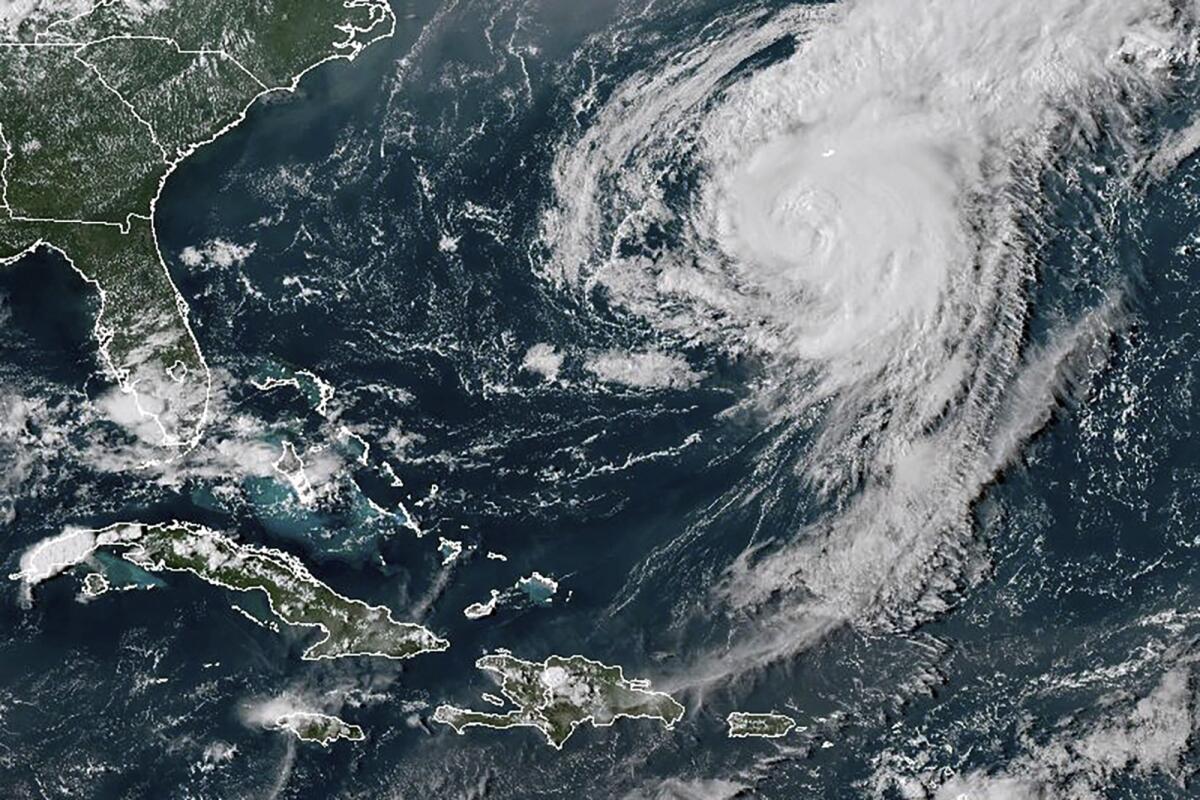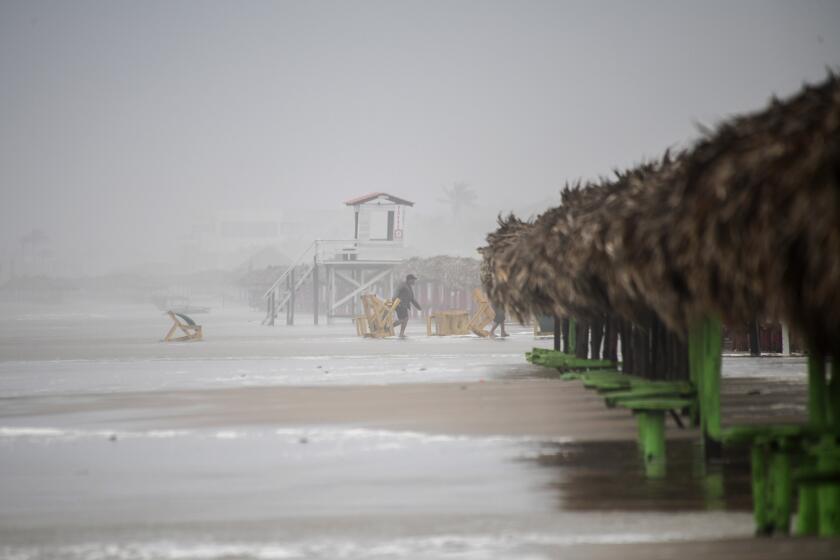Hurricane Ernesto moves away from Bermuda to open waters

MEXICO CITY — Hurricane Ernesto, which made landfall on the tiny British Atlantic territory of Bermuda early Saturday, brought heavy rains and strong winds before moving north-northeast away from the area.
The storm forced residents to stay indoors and more than 26,000 people were without power, officials said. The Category 1 hurricane had maximum sustained winds of 75 mph. As of late Saturday afternoon, it was reported to be about 85 miles northeast of Bermuda and moving north-northeast at 6 mph.
Earlier, the U.S. National Hurricane Center had warned of strong winds, a dangerous storm surge and significant coastal flooding. It said some 6 to 9 inches of rain was expected to fall on Bermuda.
“This rainfall will likely result in considerable life-threatening flash flooding, especially in low-lying areas on the island,” the center said.
Due to the large size of the storm and its slow movement, winds with tropical storm force and gusts up to hurricane force were expected into Saturday night. The tropical storm winds were expected to continue well into Sunday, the Bermuda government said.
The Bermuda Weather Service confirmed the hurricane’s eye had passed between 5:30 and to 8:30 a.m. The eye expanded as it crossed Bermuda.
In the U.S., the National Hurricane Center reported life-threatening surf and rip currents on the East Coast that were expected to reach Canada.
Ernesto should pass near southeastern Newfoundland late Monday, the center said.
Bermuda is an archipelago of 181 tiny islands whose total land mass is roughly the size of Manhattan. According to AccuWeather, it’s uncommon for the eye of a hurricane to make landfall in Bermuda: Before Ernesto, only 11 of 130 tropical storms that came within 100 miles of Bermuda had made landfall there since 1850.
Bermuda is a renowned offshore financial center with sturdy construction, much of it at a relatively high elevation, so storm surge is not as problematic as it is for low-lying islands.
Debby, Oscar, Tony: What’s in a storm’s name? How does a tropical storm or hurricane get its moniker? Will yours come up on the forecasters’ list?
Ernesto previously battered the northeastern Caribbean, leaving tens of thousands of people without water in Puerto Rico as the National Weather Service issued yet another severe heat advisory, warning of “dangerously hot and humid conditions” in the U.S. territory.
LUMA, Puerto Rico’s power company, said it had restored more than 1.3 million customers’ electricity 72 hours after the storm’s passage. LUMA has not said when it expects power to be fully restored.
“It’s not easy,” said Andrés Cabrera, 60, who lives in the north coastal city of Carolina and has no water or power.
Like many on the island, he could not afford a generator or solar panels. Cabrera said he was relying only “on the wind that comes in from the street” for relief.
Ernesto is the fifth named storm and the third hurricane of this year’s Atlantic hurricane season.
The National Oceanic and Atmospheric Administration in the U.S. has predicted an above-average Atlantic hurricane season this year due to record-high ocean temperatures. NOAA forecast 17 to 25 named storms, with four to seven major hurricanes.
More to Read
Sign up for Essential California
The most important California stories and recommendations in your inbox every morning.
You may occasionally receive promotional content from the Los Angeles Times.











